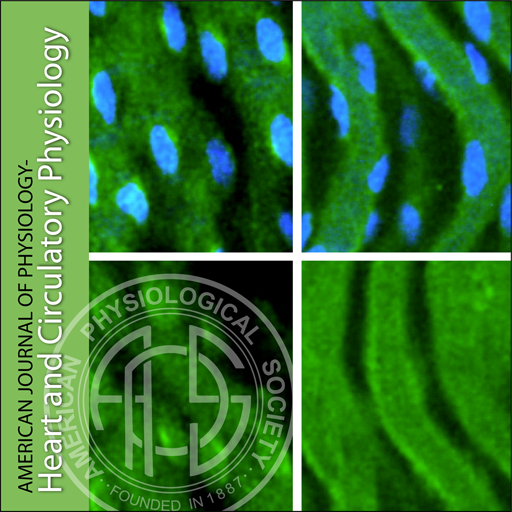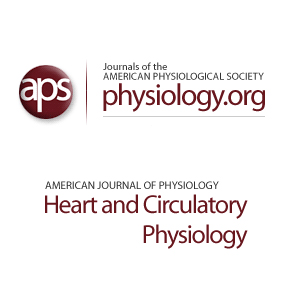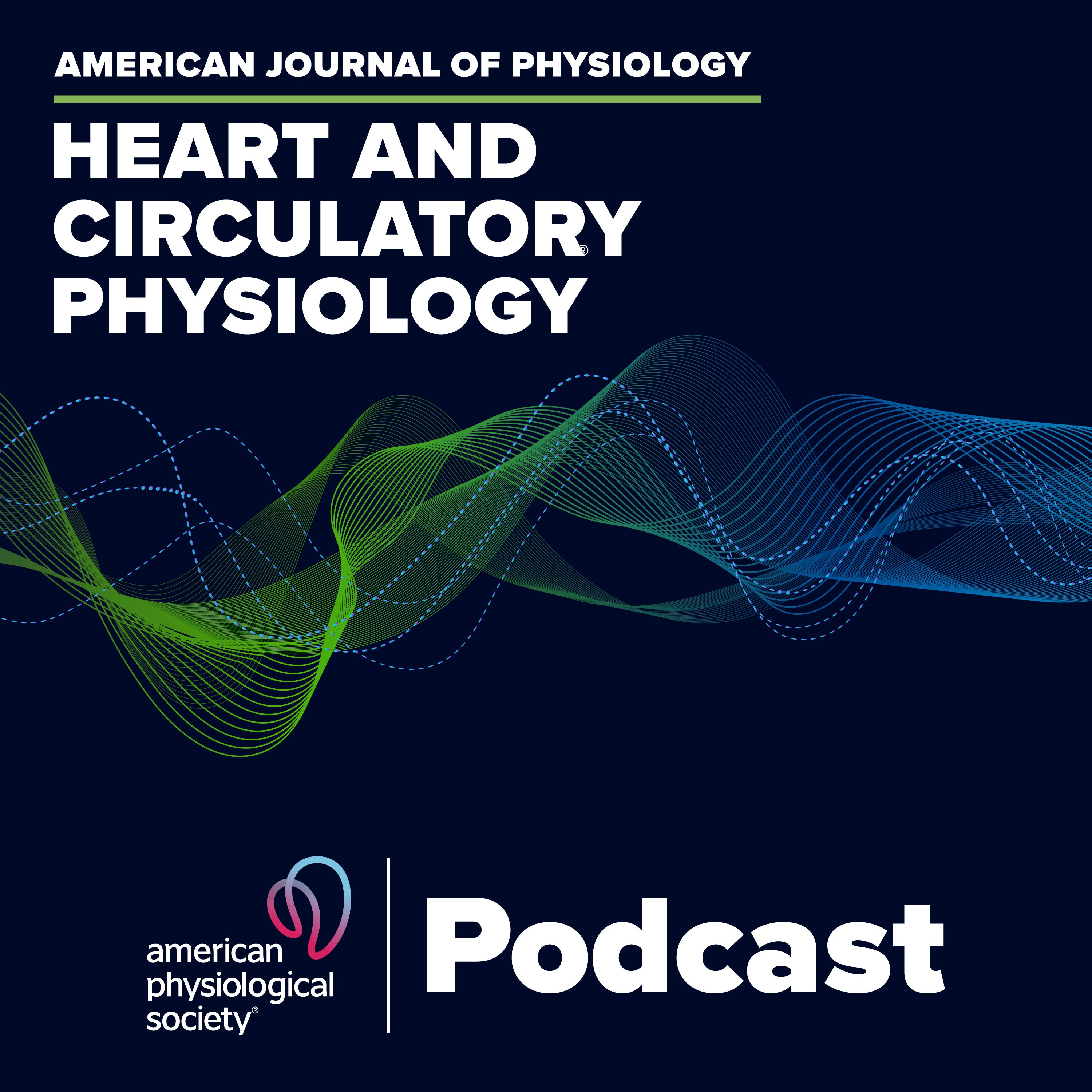Episodes

Tuesday Jul 23, 2013
Regulation of Cardiac Ryanodine Receptor by Calmodulin and S100A1
Tuesday Jul 23, 2013
Tuesday Jul 23, 2013
Are "leaking" ryanodine receptor channels during diastole really important in cardiac hypertrophy and heart failure, or are the problems actually related to ryanodine receptors that stay open too long during systole? In this podcast Associate Editor W. Gil Wier interviews lead author Gerhard Meissner (University of North Carolina at Chapel Hill) and leading expert Peter Mohler (Ohio State University) about Meissner's groundbreaking new work by Yamaguchi et al, giving us key insights into this fascinating study. Will we find out exactly which amino acid is involved in calmodulin inhibition of ryanodine receptors? Listen and learn.
Naohiro Yamaguchi, Asima Chakraborty, Tai-Qin Huang, Le Xu, Angela C. Gomez, Daniel A. Pasek, and Gerhard Meissner Cardiac hypertrophy associated with impaired regulation of cardiac ryanodine receptor by calmodulin and S100A1 Am J Physiol Heart Circ Physiol, published online May 10, 2013, doi: 10.1152/ajpheart.00144.2013.

Thursday Jul 18, 2013
Thursday Jul 18, 2013
Can hypertension be treated by substituting fat for carbohydrate in the diet? The recent work by Bosse et al found that a high fat/low carbohydrate diet improved vascular function and reduced blood pressure in hypertensive rats. Listen as Editor in Chief William C. Stanley, lead author Thunder Jalili (University of Utah) and expert Jun Ren (University of Wyoming) discuss the role of dietary fats and carbohydrates in cardiovascular function in hypertension.
John D. Bosse, Han Yi Lin, Crystal Sloan, Quan-Jiang Zhang, E. Dale Abel, Troy J. Pereira, Vernon W. Dolinsky, J. David Symons, and Thunder Jalili A low-carbohydrate/high-fat diet reduces blood pressure in spontaneously hypertensive rats without deleterious changes in insulin resistance Am J Physiol Heart Circ Physiol, published online April 19, 2013, doi: 10.1152/ajpheart.00631.2012.

Tuesday Jul 16, 2013
Signaling of Immediate Exercise Hyperemia
Tuesday Jul 16, 2013
Tuesday Jul 16, 2013
What do 21st century cardiovascular physiology and classical physiologists in 1920s Cairo, Egypt have in common? Our latest podcast explores the clinical study by Crecelius et al, which seeks to understand the signaling mechanisms involved in blood flow regulation in humans. With a nod to history, Associate Editor Ajay Shah, lead author Frank Dinenno (Colorado State University), and expert Michael Joyner (Mayo Clinic) try to unravel the mysteries of exercise hyperemia. Listen now.
Anne R. Crecelius, Brett S. Kirby, Gary J Luckasen, Dennis G Larson, and Frank A. Dinenno Mechanisms of rapid vasodilation following a brief contraction in human skeletal muscle Am J Physiol Heart Circ Physiol, published online May 3, 2013, doi: 10.1152/ajpheart.00298.2013.

Tuesday Jun 25, 2013
Breathing Rate and Steady-State Hemodynamics
Tuesday Jun 25, 2013
Tuesday Jun 25, 2013
Regulation of sympathetic nerve activity is a complex process under the best of conditions in human patients, and further complicated in disease states. In our podcast about the work by Limberg et al, Associate Editor Dr. Irving Zucker interviews lead author Jerome Dempsey (University of Wisconsin - Madison) and expert Harold Schultz (University of Nebraska Medical Center) to dig deeper into the question: Does breathing have the same marked modulatory effect on muscle sympathetic nerve activity (MSNA) in steady state activity – bursts per minute – as it does within the breath itself? Using previous studies with inconsistent results as a springboard for their own research, Dempsey and colleagues studied MSNA in human patients within breath and at steady state. What were their results? Listen in and find out.
Jacqueline K. Limberg, Barbara J. Morgan, William G. Schrage, and Jerome A. Dempsey Respiratory influences on muscle sympathetic nerve activity and vascular conductance in the steady state Am J Physiol Heart Circ Physiol, published online April 12, 2013, doi: 10.1152/ajpheart.00112.2013.

Friday May 31, 2013
Telemetry, Hibernating Myocardium and Sudden Death
Friday May 31, 2013
Friday May 31, 2013
How can we identify who is at risk for sudden cardiac death, when patients have no history of cardiac ischemia and no signs of coronary occlusion? Authors of the recent work by Pizzuto et al may have found answers in their innovative new animal model study. Associate Editor Fabio Recchia interviews senior author John Canty (University of Buffalo) and leading expert Edward McFalls (VA Medical Center, University of Minnesota) about the intricate study performed by Canty and colleagues in chronically instrumented pigs, which provides unique insights into telemetrically-measured left ventricular pressure changes immediately preceding sudden cardiac death. How will the lessons learned here translate to the clinical prevention of sudden cardiac death in humans?
Matthew F. Pizzuto, Gen Suzuki, Michael D Banas, Brendan M. Heavey, James A Fallavollita, and John M. Canty Dissociation of Hemodynamic and Electrocardiographic Indices of Myocardial Ischemia in Pigs with Hibernating Myocardium and Sudden Cardiac Death Am J Physiol Heart Circ Physiol, published online April 12, 2013, doi: 10.1152/ajpheart.00166.2013.

Wednesday May 15, 2013
Mitochondrial Uncoupling and Cardioprotection
Wednesday May 15, 2013
Wednesday May 15, 2013
What do we know about the relationship between uncoupling proteins (UCP) and myocardial energetics, as well as UCP and ROS production? This podcast explores these topics and more in Associate Editor Gary Lopaschuk’s interview with lead author Cevher Ozcan (University at Buffalo) and expert Hossein Ardehali (Northwestern University) on the work by Ozcan and her colleagues. What is the role of UCP3 in ischemia reperfusion injury, arrhythmia, and preconditioning? What human diseases implicate mutations in UCP3 and other uncoupling proteins in their pathology? Listen to learn more.
Cevher Ozcan, Monica Palmeri, Tamas L. Horvath, Kerry S. Russell, and Raymond R. Russell III Role of uncoupling protein 3 in ischemia-reperfusion injury, arrhythmias, and preconditioning Am J Physiol Heart Circ Physiol, published online March 1, 2013, doi: 10.1152/ajpheart.00592.2012.

Tuesday May 07, 2013
PART ONE Metabolism of Ketone Bodies in Health and Disease
Tuesday May 07, 2013
Tuesday May 07, 2013
How does the gut microbiome impact on myocardial energy substrate metabolism? In part one of our two-part podcast on the Review article by Cotter et al, Associate Editor Christine Des Rosiers interviews lead author Peter Crawford (Washington University in St. Louis) and renowned metabolism expert Heinrich Taegtmeyer (University of Texas Medical School). Building on Crawford and colleagues' seminal work published in 2009 on ketone body metabolism using a unique experimental mouse model, which is germ free, we discuss the broad topic of integrated intermediary metabolism. What is the link between the gut microbiome, ketone body metabolism and cardiac physiology? Listen and learn.
David G. Cotter, Rebecca C. Schugar, and Peter A. Crawford Ketone body metabolism and cardiovascular disease Am J Physiol Heart Circ Physiol, published online February 8, 2013, doi: 10.1152/ajpheart.00646.2012.

Tuesday May 07, 2013
PART TWO Metabolism of Ketone Bodies in Health and Disease
Tuesday May 07, 2013
Tuesday May 07, 2013
What happens when myocardium are exposed to chronic states of ketosis? In part two of our podcast on the Review article by Cotter et al, Associate Editor Christine Des Rosiers continues the discussion with lead author Peter Crawford (Washington University in St. Louis) and renowned metabolism expert Heinrich Taegtmeyer (University of Texas Medical School) about the adaptation of the myocardium to chronic ketosis. We explore how the heart protects itself from an overabundance of ketone bodies by down regulating key regulatory enzymes in ketone body metabolism. What new experimental models are being developed to study the targeted inactivation of the SCOT enzyme, which may help us understand how the heart protects against fuel toxicity? Listen now.
David G. Cotter, Rebecca C. Schugar, and Peter A. Crawford Ketone body metabolism and cardiovascular disease Am J Physiol Heart Circ Physiol, published online February 8, 2013, doi: 10.1152/ajpheart.00646.2012.

Monday May 06, 2013
Mitochondrial Function in the Ischemic Human Heart
Monday May 06, 2013
Monday May 06, 2013
Assessment of cardiac mitochondrial function in patients with chronic ischemic heart disease is rarely undertaken, but ultimately these measurements provide the final word in our understanding of the pathology of myocardial bioenergetics. In this new podcast, Editor in Chief William Stanley interviews lead author Flemming Dela (University of Copenhagen) and expert Ethan Anderson (East Carolina University) about the clinical studies by Stride et al. Listen as we gain new insights into the challenges of obtaining samples from human ventricle tissue, and discuss the experimental hurdles faced by researchers in this field. Will the next steps uncover new ways to manipulate mitochondria to lessen ischemia injury? Listen and find out.
Nis Stride, Steen Larsen, Martin Hey-Mogensen, Christina Neigaard Hansen, Clara Prats, Daniel Steinbrüchel, Lars Køber, and Flemming Dela Impaired Mitochondrial Function in Chronically Ischemic Human Heart Am J Physiol Heart Circ Physiol, published online March 29, 2013, doi: 10.1152/ajpheart.00991.2012.

Thursday May 02, 2013
Atrial and Sinus Node Arrhythmias in Ankyrin-B Syndrome
Thursday May 02, 2013
Thursday May 02, 2013
How can one monogenic defect—a mutation of the structural protein ankyrin-B—give rise to multiple disparate phenotypes across the heart? The new work by Wolf et al examines this very question. Associate Editor Igor Efimov interviews lead author Thomas Hund (Ohio State University) and expert Natalia Trayanova (Johns Hopkins University) in our latest podcast, which explores the multi-scale computer model created by Hund and his colleagues to study ankyrin-B mutation and its effect on sinus node dysfunction. Does Hund make the case for using an integrative, rather than reductionist, approach to studying cardiac arrhythmias? Listen and learn.
Roseanne M. Wolf, Patric Glynn, Seyed Hashemi, Keyan Zarei, Colleen C. Mitchell, Mark E. Anderson, Peter J. Mohler, and Thomas J. Hund Atrial Fibrillation and Sinus Node Dysfunction in Human Ankyrin-B Syndrome: A Computational Analysis Am J Physiol Heart Circ Physiol, published online February 22, 2013, doi: 10.1152/ajpheart.00734.2012.

